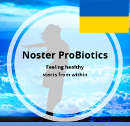Bifidobacterium longum is a Gram-positive, rod-shaped bacterium found in the human gastrointestinal tract and the vagina. It is one of the most significant and important types of “good” bacteria that inhabit the human body.
Table from Wikipedia, the free encyclopedia
| Bifidobacterium longum | |
|---|---|
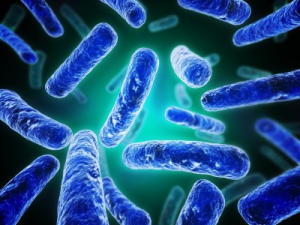 |
|
| Scientific classification | |
| Kingdom: | Bacteria |
| Division: | Firmicutes |
| Class: | Actinobacteria |
| Order: | Bifidobacteriales |
| Family: | Bifidobacteriaceae |
| Genus: | Bifidobacterium |
| Species: | B. longum |
| Binomial name | |
| Bifidobacterium longum | |
It is microaerotolerant anaerobe, which means it doesn’t need oxygen to live, (anaerobe) but can survive for a short while in the presence of oxygen (microaerotolerant). Being an anaerobe it gets its energy from fermentation. One of the by-products of fermentation is lactic acid. This acid changes the ph of the area preventing the gr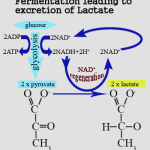 owth of pathogenic bacteria, “bad” bacteria.
owth of pathogenic bacteria, “bad” bacteria.
 It is one of the earliest colonizers of the gastrointestinal tract of infants and is passed to the child as it passes down the birth canal and via the breast milk. This boosts the infant’s immune system. There is a far fewer incidence of diarrhoea and allergies in natural birth and breastfed babies.
It is one of the earliest colonizers of the gastrointestinal tract of infants and is passed to the child as it passes down the birth canal and via the breast milk. This boosts the infant’s immune system. There is a far fewer incidence of diarrhoea and allergies in natural birth and breastfed babies.
Bifidobacterium longum and other Bifidobacterium species make up 90% of the infants gut bacteria. This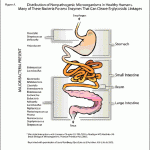 drops down over the years to around 3% in adults. Bifidobacterium longum has a high tolerance for gastric acid and bile so can colonise the lower gut, the small and large intestines. It has a mechanism which allows it to bind to the walls of the intestine preventing it from being washed away.
drops down over the years to around 3% in adults. Bifidobacterium longum has a high tolerance for gastric acid and bile so can colonise the lower gut, the small and large intestines. It has a mechanism which allows it to bind to the walls of the intestine preventing it from being washed away.
Health Benefits of Bifidobacterium longum in Brief.
These are improved lactose tolerance and diarrhoea, prevention of food allergies, and prevention of colonization of the gut by pathogens. Bifidobacterium longum removes cholesterol from the body by using cholesterol as a component in its cell membrane. It also binds to bile acids suppressing their resorption. This lowers the cholesterol in the body as bile salts are made up of cholesterol. It has been used to treat cancers and skin conditions as well.
Therapeutic uses of Bifidobacterium longum
Cancer treatment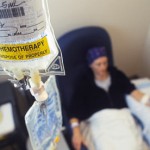
Bifidobacterium longum has been used in colon cancer where it significantly suppresses the colon tumour incidence and tumour multiplying as well as reducing the tumour volume. So it prevented cancer from spreading and stopped tumours from growing.
 Immune system regulation
Immune system regulation
Bifidobacterium longum has a positive effect on the immune system. It reduces allergies as well as the symptoms of influenza infections and fevers, also shown to reduce the duration and severity of the common cold.
Sensitive skin treatment
An interesting treatment is applying Bifidobacterium longum topically, where it has the usual anti-inflammatory properties. This is the same effect if taken orally just quicker.
Pancreatic necrosis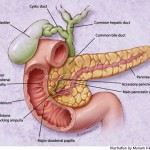
Bifidobacterium longum along with Lactobacillus acidophilus(link) have been used successfully to prevent as well as treat pancreatic necrosis in infants. If left untreated it has a 100% mortality rate due to bacterial translocation ie wrong bacteria in the wrong place. A type of infection in the lining of the intestine caused by bacteria (necrotizing enterocolitis; NEC). Taking Bifidobacterium infantis along with another bacterium called Lactobacillus acidophilus seems to help prevent NEC in critically ill infants.
 Lactose Intolerance
Lactose Intolerance
Bifidobacterium longum alleviates of lactose intolerance symptoms due to the usual anti-inflammatory effects of our healthy immune system.
Vaginitis
The inflammation of the vagina can be prevented and treated by Bifidobacterium longum. The lactic acid production reduces the ph preventing pathogens from surviving. It’s usual anti-inflammatory effects also help.
Diarrhoea
Diarrhoea due to radiation, chemotherapy, antibiotics, or other causes can be treated with Bifidobacterium longum and others to restore “good bacteria” in the gut that have been killed or removed.
Diarrhoea in infants, rotaviral diarrhoea in particular
A combination of Bifidobacterium longum and Streptococcus thermophiles helps prevent rotaviral diarrhoea.
Traveller’s diarrhoea
Again a combination of probiotics does the trick. Bifidobacterium longum, Lactobacillus acidophilus, Lactobacillus bulgaricus or Streptococcus thermophilus will assist in preventing traveller’s diarrhoea.
 Sports Diarrhoea, eg canoeist in the Duzi
Sports Diarrhoea, eg canoeist in the Duzi
Similar to the traveller’s diarrhoea, the same combination will help alleviate Duzi Guts.
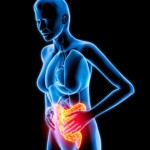 Irritable bowel syndrome (IBS)
Irritable bowel syndrome (IBS)
Bifidobacterium longum reduces the symptoms of IBS due to the usual anti-inflammatory effect. It does not seem to increase bowel motion though, but it does decrease the bloating effect.
Ulcerative colitis
Taking a combination of Bifidobacterium longum, Lactobacillus acidophilus can prevent the recurrence of ulcerative colitis as well as alleviate the symptoms.
Constipation
Research has shown that by taking Bifidobacterium, constipation in children 3-16 years of age can be reduced. Try mixing it with milk or yoghurt as this has been shown to increase bowel motility in adults prone to constipation.
Pouchitis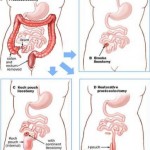
Can be a complication of surgery for ulcerative colitis. This can be prevented by taking a combination of Bifidobacterium, Lactobacillus, and Streptococcus.
Lung infections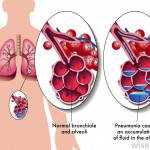
This is fantastic for children on too many antibiotics. A combination of Lactobacillus acidophilus and Bifidobacterium mixed with milk, reduces fever, cough and blocked nose. It shortens the time the child has the symptoms and reduces the time lost off from school.
For the elderly taking Bifidobacterium longum before and after the flu shots further increases their resistance to flu.
 Psychobiotic
Psychobiotic
Not crazy about the name, excuse the pun. Psychobiotics is a new word in the medical dictionary to describe probiotics that produce a mental health benefit to patients with psychiatric conditions. The possible reason for their success is the anti-inflammatory effect they have on the vessels in the brain. Conditions such as depression have been shown to have an increase in inflammation of these blood vessels.
Other conditions that are treated by Bifidobacterium longum
<
p style=”text-align: justify;”>Other uses are atopic eczema, yeast infections (candidiasis), breast pain (mastitis), hepatitis, lactose intolerance, mumps and Lyme disease.
